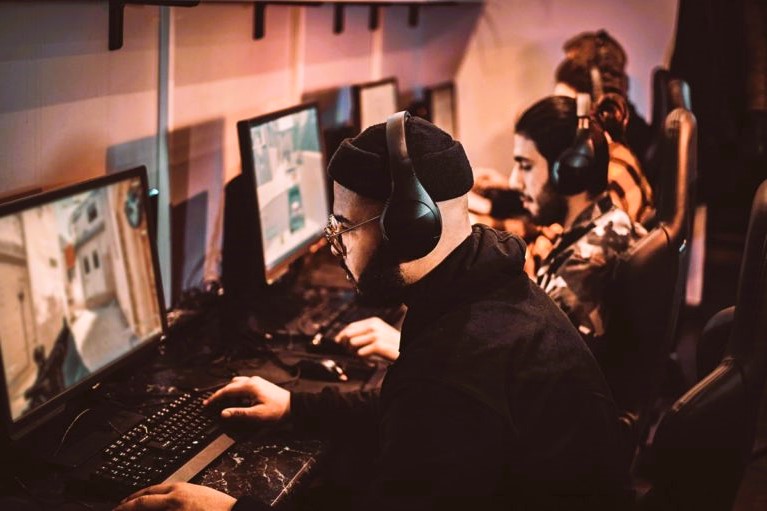In the world of competitive eSports, where milliseconds can mean the difference between victory and defeat, internet speed is not just a convenience—it’s a necessity. Professional gamers and eSports enthusiasts alike depend on fast, reliable connections to ensure seamless gameplay, optimal performance, and fair competition. But how exactly does internet speed impact competitive eSports? Let’s delve into the specifics.
1. Why Internet Speed Matters in eSports
Competitive eSports revolves around real-time interactions. Games such as League of Legends, Counter-Strike: Global Offensive, and Valorant demand rapid data transmission between players and servers. The faster the internet, the quicker this communication happens, reducing latency, ensuring smoother gameplay, and providing a level playing field.
Key Factors of Internet Speed
- Ping (Latency): Measures the time it takes for data to travel from your device to the game server and back. Lower ping ensures faster response times, critical in games requiring split-second decisions.
- Download Speed: Determines how quickly data (game graphics, updates, player actions) is received from the server.
- Upload Speed: Essential for sending player actions, such as movements and commands, to the server in real-time.
2. The Role of Low Latency in Competitive eSports

What is Latency?
Latency, often referred to as ping, is the delay between a player’s action and its corresponding reaction in the game. In competitive eSports, latency below 20ms is considered optimal, while anything above 100ms can lead to game-breaking lag.
Effects of High Latency
- Delayed Actions: Commands may take longer to register, putting players at a disadvantage.
- Teleporting Characters: Opponents may appear to “teleport,” making precise aiming and strategy execution nearly impossible.
- Disrupted Team Communication: In team-based games, delays in commands or positional updates can cause miscommunication and strategic errors.
According to IGN, competitive games with high latency are often flagged as unplayable by professional teams, reinforcing the importance of maintaining low ping during matches. Why are speed tests so important for console gamers? Read our article to find out.
3. Bandwidth Requirements for Competitive eSports
Although bandwidth (download and upload speed) plays a secondary role to latency, it remains essential for stable connections. Many games recommend a minimum speed of 3 Mbps download and 1 Mbps upload, but professional eSports gamers often require much more—up to 25 Mbps or higher—to account for streaming, team communication, and in-game demands.
Why High Bandwidth Matters
- Smooth Streaming: Professional players often stream their gameplay on platforms like Twitch, requiring additional upload capacity.
- Large Updates: Games frequently release updates and patches, which demand significant download speeds.
- Multiple Devices: Many households have multiple devices connected simultaneously, impacting available bandwidth for gaming.
4. Internet Speed Disparities and Their Impact on Fair Play
Regional Differences
Not all regions have equal access to high-speed internet. Players in countries with underdeveloped infrastructure may face significant disadvantages compared to those in areas with fiber-optic connections.
For example, South Korea is renowned for its advanced broadband infrastructure, enabling its players to consistently perform at the highest levels in games like StarCraft II and Overwatch. Conversely, players in rural areas of developing nations may struggle with unstable connections, affecting their ability to compete on an international stage.
Server Proximity
The closer a player is to the game server, the lower their latency. This can create an uneven playing field in global tournaments, where participants are spread across continents.
Organizations like the International Telecommunication Union (ITU) are working to standardize and improve internet accessibility worldwide, aiming to reduce these disparities.
5. How Gamers Can Optimize Their Internet for eSports

While some factors, like server proximity, are out of a player’s control, there are steps gamers can take to enhance their connection:
Practical Tips for Gamers
- Use Wired Connections: Ethernet cables provide more stable and faster connections compared to Wi-Fi.
- Close Background Applications: Reducing bandwidth usage from other apps ensures smoother gameplay.
- Upgrade Your Plan: Choosing a plan with higher speeds can reduce latency and improve performance.
- Test Regularly: Use tools like Speedtest to monitor your connection and address issues promptly.
6. The Future of Internet Speed in eSports
As gaming technology evolves, so do the demands on internet infrastructure. Emerging trends like cloud gaming and virtual reality eSports require even faster speeds and lower latency. Companies like Google Stadia and NVIDIA GeForce Now are pushing the limits of internet performance, highlighting the need for advancements in broadband technology.
5G networks are another game-changer, promising ultra-low latency and high speeds that could revolutionize mobile eSports. However, widespread adoption and consistent performance remain challenges.
In competitive eSports, internet speed is more than a technical specification—it’s a competitive advantage. From reducing latency to ensuring smooth gameplay, a reliable and fast connection is essential for gamers aiming to excel in this high-stakes arena.
As the eSports industry continues to grow, the demand for better internet infrastructure will only intensify, shaping the future of gaming worldwide. Whether you’re a casual gamer or a professional, understanding and optimizing your internet connection is the first step toward success.

